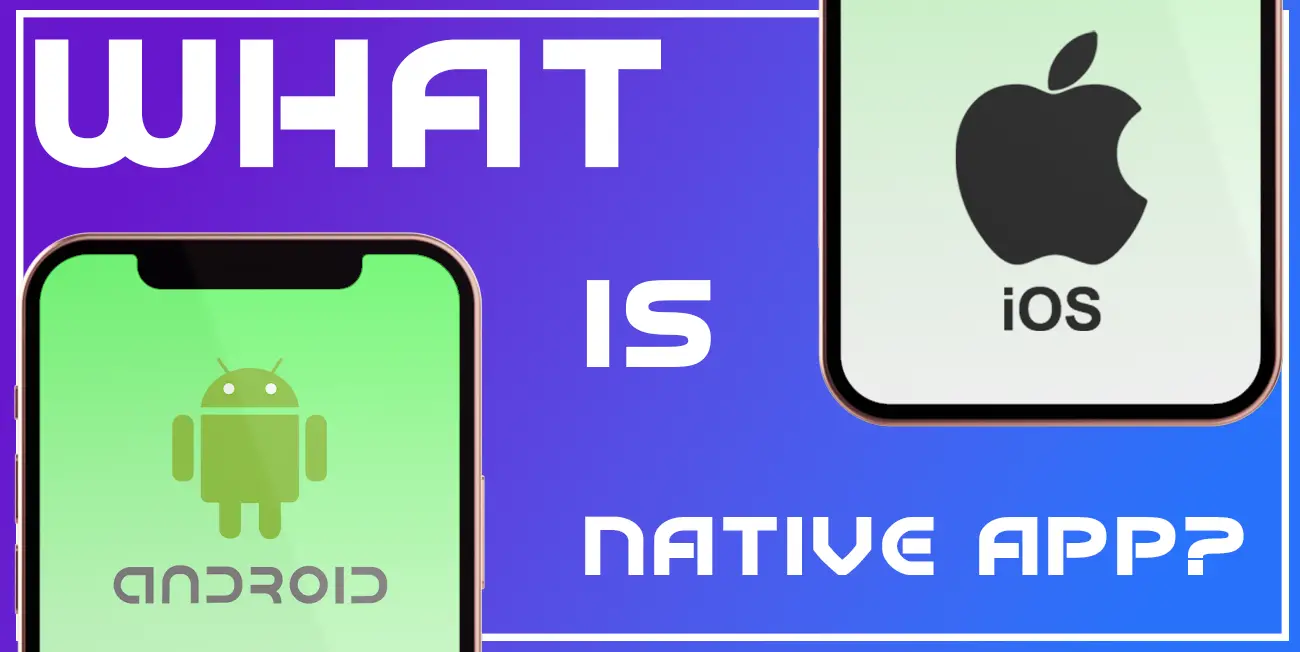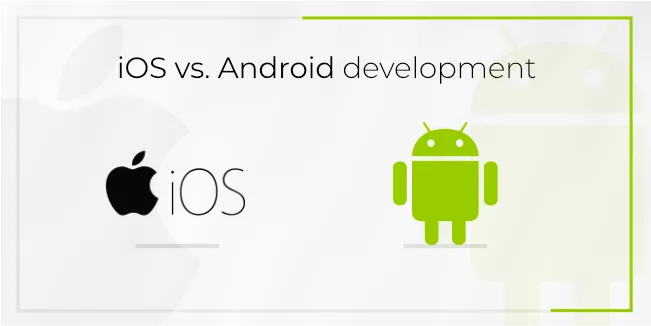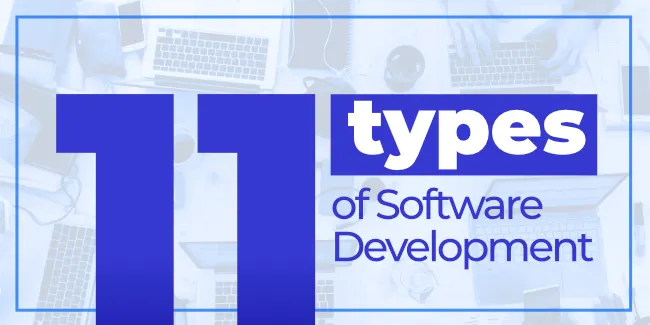Currently, two platforms dominate the mobile phone market – Android, created by Google, and iOS, created by Apple. Both of these platforms have their own characteristics and are very different from each other. Therefore, if you are creating your own mobile application, you must be aware that you will have to create two versions. One for Android and the other for iOS.
Applications developed using native programming languages and intended for use on a given platform are called native applications. In this article, we will take a closer look at what such applications are characterized by, what are their advantages and disadvantages, how much it costs to create such an application, and much more!
But let’s start from the beginning, i.e., let’s define what exactly a native app is.
Native app – definition
A native application is a software program that you download from app stores such as the google play store or apple app store, as any other app. So, what is so special about it? Well, this type of application is created specifically for a given and predetermined platform, using the recommended frameworks and programming languages, thanks to which it can use all the device features and capabilities of the platforms on which it will run.
Native applications are faster and more stable than those created cross-platform. Additionally, thanks to the use of native components, they are visually appealing to users. Better performance, stability, and user interface translate into an increased user experience.
If you want to create an application for a specific platform and take advantage of all its capabilities, you should opt for native app development. Thanks to this solution, you will be able to create a high-quality and stable product that will meet the needs and expectations of your users.
If you want to start developing your application natively, you need to know what programming languages and frameworks to use.
Android native programming tools
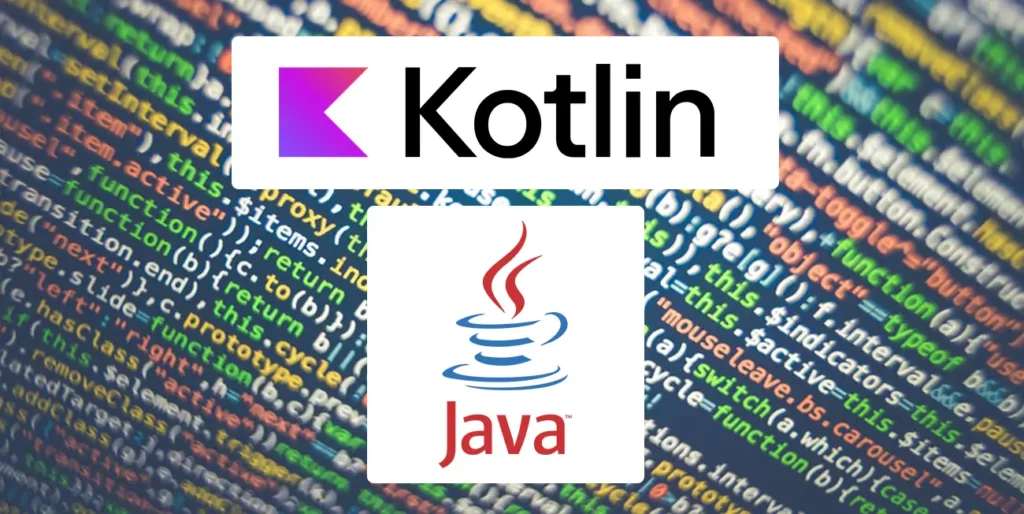
Java
Java is the most common language for Android development. It is a versatile and powerful programming language that enables developers to create high-quality applications.
If you want to start developing in Java, you need to install the Android SDK and the Java Development Kit (JDK). You can find all the necessary tools and instructions on the official Android website.
Once you have all the necessary tools installed, you can start learning Java. Many online resources can help you get started.
Kotlin
Kotlin is a statically typed programming language developed by JetBrains – a Czech software company. In 2019, Kotlin replaced Java as the preferred language for native Android apps development.
This is because Kotlin is more powerful and easier to learn than Java. Kotlin is fully compatible with Java and can be used to write more concise and readable code.
If you want to start developing in Kotlin, you must install the Kotlin plugin for your IDE of choice. You can find instructions on how to do this on the official Kotlin website.
iOS native tools programming tools
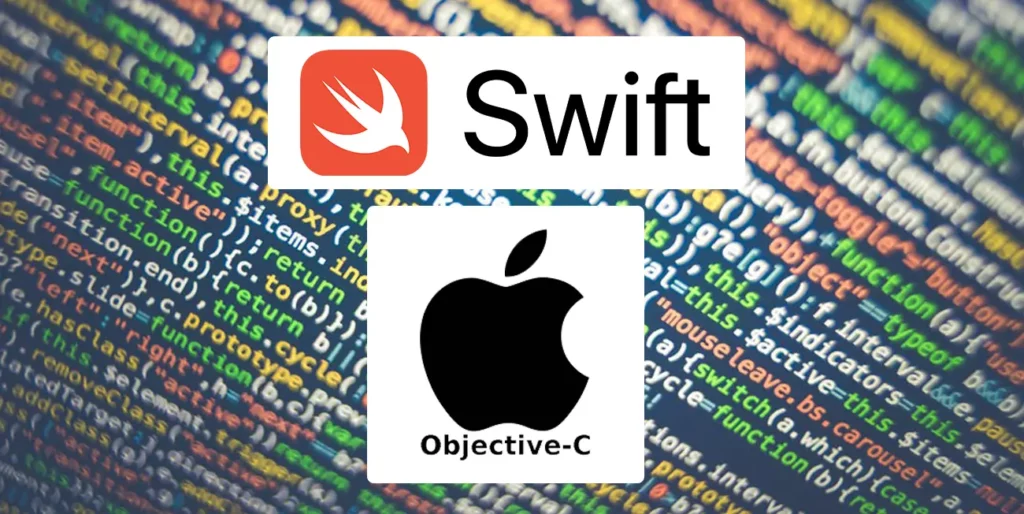
Objective-C
Objective-C is a general-purpose, object-oriented programming language that was developed by Brad Cox and Tom Love in the early 1980s at Apple Inc.
It was the main programming language used for iOS development and can be used to write code for OS X and tvOS. Objective-C is a superset of the C programming language and provides object-oriented capabilities and a dynamic runtime.
If you want to start developing in Objective-C, you must install the Xcode IDE from Apple. You can find instructions on how to do this on the official Apple website.
Swift
Swift is a general-purpose, compiled programming language that was developed by Apple Inc. in 2014.
It is a modern language that is designed to be safe, fast, and interactive. Swift replaced Objective-C and now is the main programming language used for iOS development and can also be used for OS X and tvOS development.
Developing an app in Swift gives you access to many functions people enjoy on their phones. It’s also a great language to work with because there isn’t much code, and it isn’t difficult. Learn more with our “OBJECTIVE-C VS. SWIFT – WHICH ONE TO CHOOSE FOR IOS DEVELOPMENT?” article!
Native app – pros
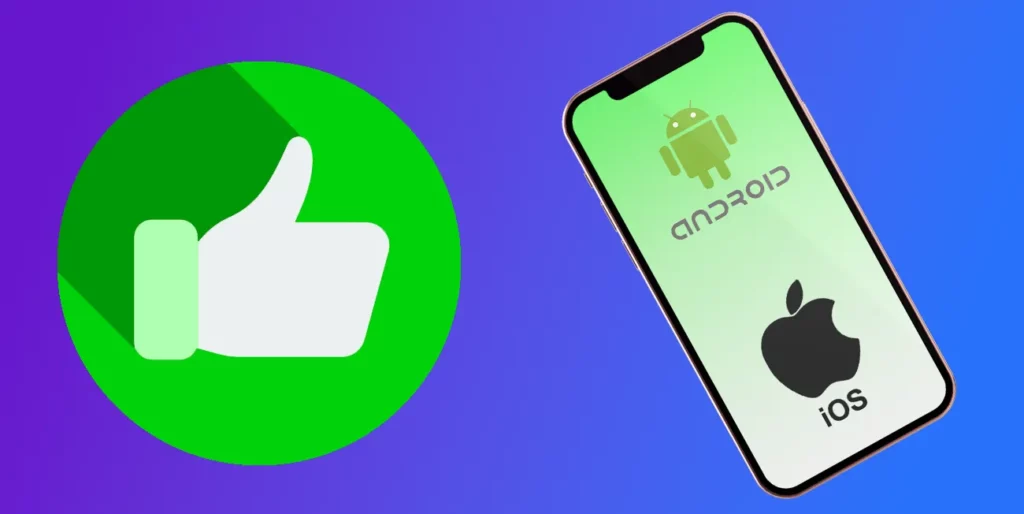
Great performance
Native applications have great performance because they are written in the language that is native to the platform. This means that there is no need for an interpreter or virtual machine, which can sometimes slow down apps.
Stability
Native apps tend to be more stable because they are written specifically for one platform. This means that there is less chance for compatibility issues and bugs. Additionally, you have to maintain only one codebase, which means that you can take much more time to do it!
Full access to features
Because native apps are written specifically for one platform, they have full access to all of its features and mobile device APIs. This means you can use all of the platform’s latest and greatest features without worrying about compatibility issues.
Great UI
Native applications usually have better UI design because they are designed specifically for the platform they are running on. This means that they can take advantage of all the latest platform features, such as the latest user interface elements.
Native app – cons
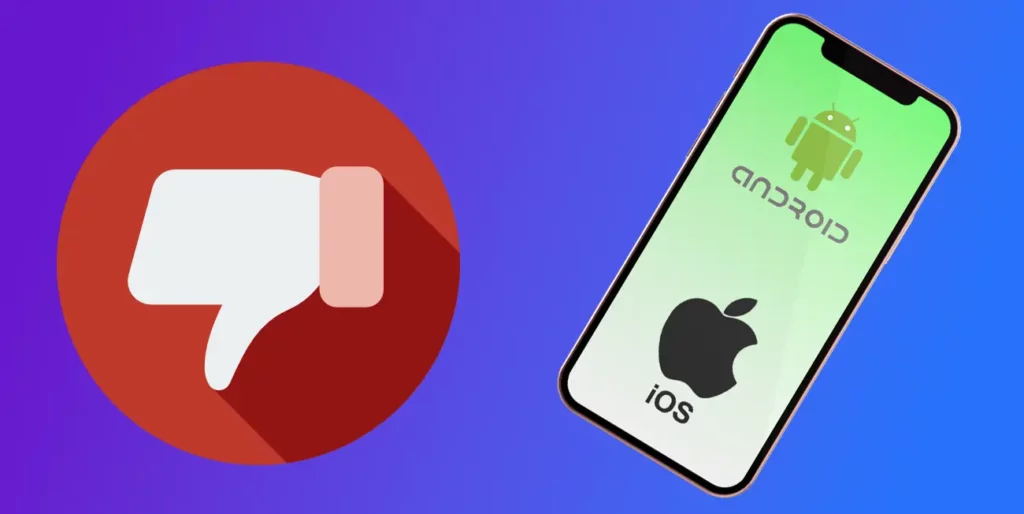
Cost
The biggest downside of native app development is cost. Because you have to develop two separate codebases, it can be twice as expensive to develop a native app than it would be to develop a cross-platform app. You also have to maintain two codebases, which can be costly.
Time
Another drawback of native app development is time. It can take longer to develop a native app because you must develop two separate codebases. You have to test the app on two different platforms, which can take up more time. Lear more about mobile development timelines with our article!
Resources
Another downside of native app development is that it requires more resources. You need two sets of developers, two sets of designers, and two sets of testers. This can be a challenge for small companies or startups with limited resources.
Costs of native development

As we previously stated, the cost of creating a native mobile app is one of its drawbacks. So, let’s take a look at this aspect in further detail. Native development offers high-performance apps but has a higher development cost than cross-platform development. If you have a tight budget to work with, native software may not be the best choice since it costs approximately 30% -40% more than cross-platform software.
Additionally, when you opt for native development, you must develop separate apps for each mobile platform. This means you need to hire different teams of developers, designers, and testers skilled in the respective platforms. For example, if you want to develop an iOS app, you will need a team of experienced developers in Swift or Objective-C. Similarly, if you want to develop an Android app, you will need a team of developers who are skilled in Java or Kotlin. This can be a challenge for small companies or startups with limited resources. Learn for which platform it is better to develop your native app first.
Examples of native mobile apps
Spotify
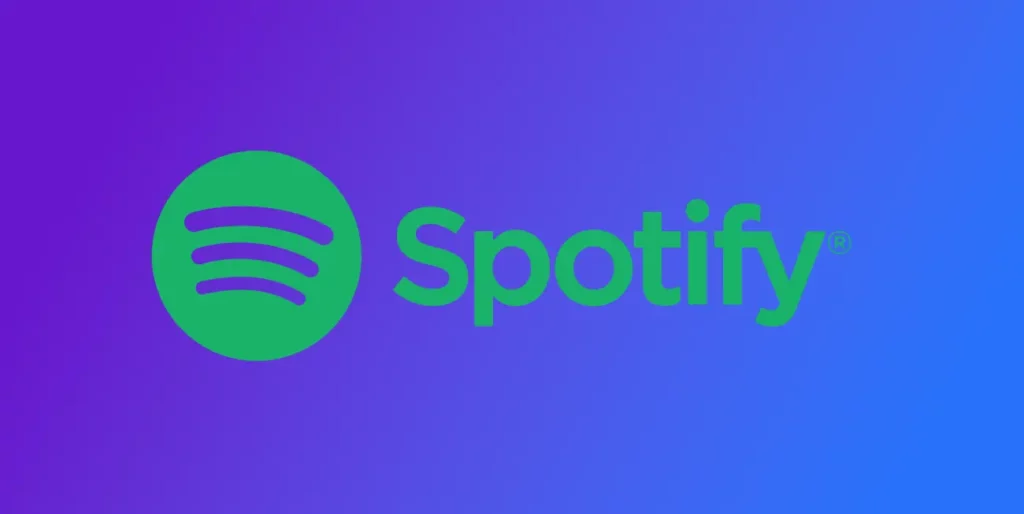
Spotify is one of the most popular music streaming services. Spotify has both mobile and web app, but for this article, we will focus on their mobile solution. Their native mobile app uses Java for Android devices and Objective-C for the iOS operating system. The app has a user-friendly interface with easy access to all the features.
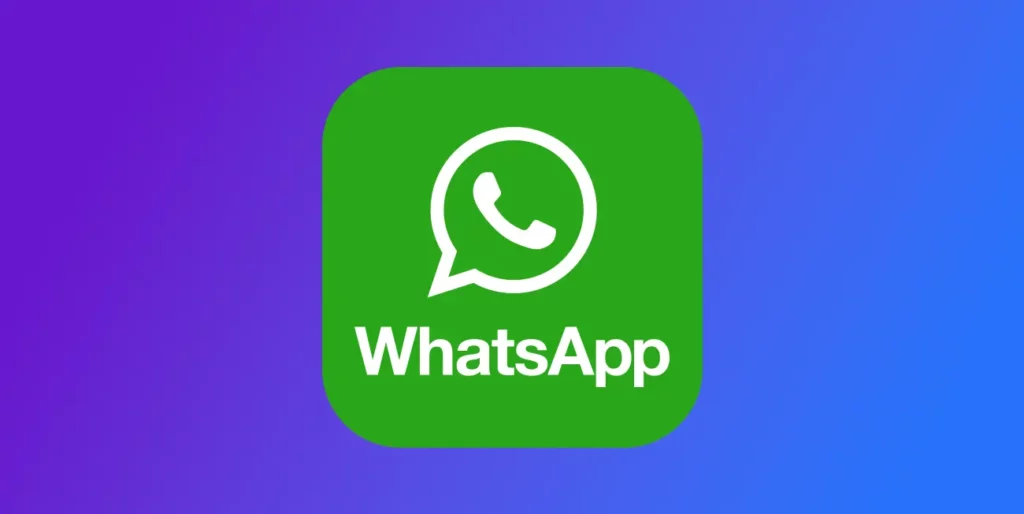
Whatsapp is a popular messaging app with over 1.5 billion monthly active users. The app uses the Kotlin programming language for Android and Objective-C for iOS devices. Whatsapp has a simple user interface that makes it easy to use.
Netflix

We all know Netflix – one of the most popular VOD platforms on the planet earth. The company uses Java for Android development and Swift for iOS. Netflix has a user-friendly interface, making it easy to find the content you’re looking for.

With over a billion monthly active users, Instagram is one of the most popular social media platforms. The app uses the Objective-C programming language for iOS and the Kotlin programming language for Android. Thanks to the use of native solutions, it can serve millions of users daily without any problems.
Native development alternative
Native development is just one of the options you can choose if you want to create your own mobile application. Hybrid apps and cross-platform apps are also great alternatives.
Hybrid apps
A hybrid app is a mobile application that combines elements of both native and web-based apps.
You can say that a hybrid app is just a mobile web app, as the concept behind this solution is to create a web app that feels and behaves like a native one! The main advantage of such mobile web apps is that they are much easier and cheaper to develop than native apps.
Cross-platform apps
Cross-platform development is the best way to hit multiple platforms in the shortest possible time without spending much money on it. It is because, with cross-platform development, developers can create only one code base that will be the basis of both Android and iOS apps. Such an approach saves resources significantly. Want to know more about software development types? Head out to our article!
Conclusion
There are many benefits to developing a mobile app natively. Native apps are faster and more responsive because they are designed specifically for the platform they are being used on. This results in a better user experience for the people using your app. Native apps also have access to all the features of the mobile devices they are using, giving them an edge over hybrid and cross-platform apps.
However, there are also some drawbacks to developing natively. The biggest one is the cost. Native app development is more expensive than other methods because you need to create separate codebases for each platform you want to support.
Ultimately, it is up to you to decide which mobile app development method is right for your project. If you have the budget for it, native app development will give you the best results. But if you need to save money, cross-platform or hybrid app development may be a better option.
